The Hospital of the Future
As England embarks on a multi-billion pound healthcare redevelopment initiative, we’re asking, "what should the hospital of the future look like?". Plus, we reflect on the recent UK Covid lockdown anniversary, and unpick a chromosomal conundrum in Question of the Week...
In this episode

00:56 - US AZ vaccine trial
US AZ vaccine trial
Jeremy Rossman, University of Kent
This week, as Covid-19 cases continue to fall in the UK, they're surging in Europe, partly as a result of the spread of the Kent variant that's becoming the dominant circulating strain of the virus in many EU countries; the other factor is low levels of coronavirus vaccination achieved so far across the EU bloc. Some of that stems from skepticism in EU countries about the effectiveness of the AstraZeneca vaccine, so maybe that will change now thanks to the announcement of another successful trial of the vaccine, this time in the US. AstraZeneca have slightly revised their numbers since they made the trial results public, but they're still very encouraging. Chris Smith spoke to University of Kent virologist Jeremy Rossman to hear his reaction but asked him first whether, a year on from the UK first entering a lockdown, he expected us to be in the situation we are today...
Jeremy - Absolutely not. There's a lot that we had an idea of what was coming, in terms of the severity and the need for strong action. But the fact that we are still experiencing lockdowns, that we've spent a large portion of the year in lockdown, in dramatic restrictions, and that we still do not have a solid plan of how we are going to get out of this, is really beyond belief to me.
Chris - What did you think would happen? This time last year when we watched Boris Johnson deliver that press conference, when everyone was just glued to the TV and we all felt a shiver go down our spines, where did you think it would end? And when?
Jeremy - I wasn't sure. What I was hoping was that we would have a lockdown and that that would drive cases down. Now that absolutely did happen. But what I had been waiting for that didn't happen, was that we would use that period of time to build and reinforce the infrastructure needed when we got out of the lockdown. So that robust and functional test, trace, isolate support system. And then coming out of the lockdown, really gradually ease until we were sure the infrastructure was working to identify cases and outbreaks,, and then have a low level of cases. That was what I was hoping for. I was fearing that we would come out too fast and the infrastructure wouldn't be in place, and that cases would go up. But I did not expect to have so little functional infrastructure in place, for cases to go up so high, and then to go into another lockdown.
Chris - Do you think we're ready now?
Jeremy - No, unfortunately. I wish I could tell you something different, but right now I am extraordinarily worried that we are facing exactly the same situation that we faced several times over this past year, that we're going to ease lockdown and that cases are going to start to rise. We still don't have really good infrastructure. And the reliance right now is on the vaccines.
Chris - We got a bit more information this week though, about one of those vaccines, that was AstraZeneca's vaccine, which was a trial from the US, so what do we get from that trial in America? What can we take away from it that we couldn't have known already?
Jeremy - I think that there are three very important takeaways from this. The first is that AstraZeneca is still a very good vaccine, 79% efficacy at preventing symptomatic COVID, and then a hundred percent efficacy at preventing severe COVID hospitalisations and fatalities. The second thing is that this clinical trial included a significant number of people that were over the age of 65, because we wanted to make sure that we got good, robust data, that in fact, this vaccine does work well in the elderly. The final takeaway is that there's a real tendency to look at numbers and say, Oh, this is 79% efficacious. And this vaccine is 94% efficacious. And so this vaccine is better. And the issue is that you can't directly compare those numbers between different clinical trials, because they were done in different times. They were done with different dosing strategies, they were done in different populations. So what we need to conclude from this, is to say, look, we have more good data saying that this is a very good vaccine, but to not get too hung up on absolute numbers between the different clinical trials.
Chris - How'd you think this has gone down with the EU? Who, many EU countries have not been enthusiastic about this vaccine? In fact, some would say they've even gone as far as to trash it reputationally, what should they take away from this?
Jeremy - My hope is that what they will take away from this, is that they have added very solid and very good data that in fact, this vaccine does work very well, is quite safe. And in fact is very effective in the over 65 age group. And that specifically has been one point that has been really highlighted by EU countries as a real concern about the vaccine. And unfortunately, it's been phrased in very poor ways, saying that it doesn't work in that age group when in fact really, they just didn't have the data to say that it worked. So now we have the data. So my hope is that this will help convince people in the EU that in fact, this is a good vaccine.
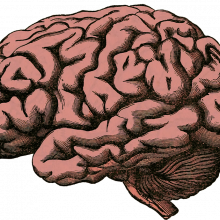
06:50 - Why humans have bigger brains than other apes
Why humans have bigger brains than other apes
Madeline Lancaster, MRC LMB Cambridge
If you’re listening to this, chances are you have a remarkably large brain. That’s not just because you’re a Naked Scientists fan, but because you’re a human: by the time you’re born, your brain contains 3 times as many nerve cells as the brains of our close primate relatives. Now scientists from the MRC Laboratory of Molecular Biology in Cambridge think they know why: a gene called Zeb2, which affects how cells move, kicks in later in human brains, giving us extra time to make extra brain matter. The work is the “brain child” of Madeline Lancaster and she told Katie Haylor about it...
Madeline - We've used what are called brain organoids. These are in vitro models of the developing brain that we generate from embryonic stem cells. And we've generated these from human stem cells as well as ape cells, and then compared them and looked at their size over time, and been able to discover why they're increasing in size in humans, compared with non-human apes.
Katie - Okay. So you looked at these organoids growing over time. What happened then? What did you see?
Madeline - Well, first of all, we of course wanted to look at size, because that's what we know is very different about our brains. Our brains are around three times larger. We just generated these organoids, and compared them and found that the human organoids were indeed about two times larger than the chimpanzee and gorilla organoids that we generated.
Katie - So what's changing then what's different in their development. Do you, kind of get to a point when you're observing these in the lab and something changes between the two?
Madeline - Yeah, exactly. So once we saw this difference in size of the organoids, we could actually go in and see what the cells were doing inside. And what we found is that the neural stem cells, so these are precursor cells that will give rise later in time, they'll generate the neurons of the brain. So all the nerve cells of the brain. But what we found is that before they even started making all those nerve cells, the human cells had a different shape than the cells of the chimpanzee and the gorilla. And this shape was indicating that the cells were maturing more slowly, and because they were maturing more slowly, they were actually able to proliferate faster. So that means they were making more and more of themselves more quickly. So they ended up with an increased number of these mother cells, if you will, that once those cells start making nerve cells, you have more of them. So you're able to then generate more of these nerve cells.
Katie - Is it a bit like the sort of tortoise and the hare situation? You know, he's taking longer to develop the brain, but you're going to get something, well, I guess we would say, maybe a bit better out of it, but maybe that's a bit human-centric
Madeline - It's probably a bit human-centric, but I like that analogy. Definitely. You take a little bit longer with these steps so that you can set up a bigger starting pool of cells. And once you have this bigger pool of cells, then everything that happens after that is going to be increased.
Katie - Did you look at why this is happening? What's going on genetically?
Madeline - So then we compared their genetic signature. So what genes are actually on in these organoids from these different species, and what we found is that when there's this delay happening in the human, there's also a delay in a particular gene and it's called Zeb2. And this is a gene that in other contexts, for example in cancer, has been shown to trigger a change in shape, which is in some ways similar to the change in shape that we're seeing. And so that was really kind of a red flag, that really suggests that Zeb2 might be responsible for this change that we're seeing and for the delay that we see in humans.
Katie - And can you confirm that by altering Zeb2 and seeing what happens?
Madeline - Yeah, exactly. So the real test then is to play around with Zeb2 expression basically. So we could turn it on earlier in the human, mimicking the kind of expression that we see in apes. And when we do that, then we see these cells change their shape earlier than they normally would, just like in the other apes. And we can also do the opposite where we can perturb the signaling that Zeb2 is doing within those cells and basically delay its effects in the ape's organoids. And then we can see that those cells start to look more like human cells.
Katie - This is really cool, but I'm wondering how much can this tell you about why human brains are different from other apes? Because we're talking about organoids, they're not full brains.
Madeline - Yeah, absolutely. No, I think that's a really important point. I mean, of course these are a model. They're a very useful model because we can't do, nor would we want to do experiments, you know, on developing ape brain. And it's very difficult to do any kind of experiments on developing human brain tissue. So this is really kind of the best option we have, but we can compare the human organoids to actual human foetal tissue. And we find that early in development actually organoids are quite a good model for the developing brain. And so there's no reason to believe that that wouldn't be true for apes as well. And so it's a fairly safe assumption that these findings would probably apply to what's happening in the early brain. But of course, this is really only the very early events. And later on, the organoids do start to diverge from the actual brain quite a bit.
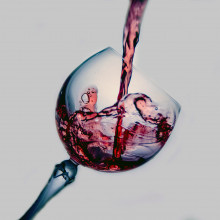
Wine that's made it to space
To outer space now, and Adam Murphy’s been looking at some wine that’s been boldly going when no wine has gone before...
Adam - Getting an experiment to space and back again is good cause for celebration. The kind of occasion that calls for opening a nice bottle of wine.
It’s doubly good then, if that experiment was a bottle of wine. Or a dozen bottles of wine. 12 bottles, and 320 little vine shoots have just come back from the ISS after spending a year in space. The bottles were Chateau Petrus 2000, a wine very much in the bracket of “if you have to ask for the price, you can’t afford it.” But since you’re asking it’s about 5000 euro.
The kind that would be wasted on the likes of me, who’s preferred wine is “the one with the sale sticker on it". This is an experiment being run by the Institute of Vines, Science and Wine in France, along with Space Cargo Unlimited. The idea was to see if aging happened any differently in space, to down on the ground. When it was tasted, some claimed the wine that had been into space tasted “younger” than the one on Earth, but others still said it was incredibly hard to tell them apart. When I’m given wine it just tastes of...wine….fermented grapes?
There is a reason to the space wine though. Here on Earth, when the wine is sitting there aging, there will be movement of liquid in the bottle. It’s called convection. Warmer liquid rises up, and cooler liquid goes down. This mixes around the oxygen in the bottle, and ingredients reacting with that, age the wine. But in space, up and down don’t really apply when there’s no gravity. So convection doesn’t really happen. So the rates of reaction in the wine change. The vines that came back all seemed to survive though, and are apparently growing faster back on Earth. Which, if I was a plant I’d rather grow down here too.
That’s all part of a plan to come up with more resistant vines. You send them boldly going when no grape vine has gone before, and they have to adapt to a whole host of changes that they never would. Then when they come back, maybe one of those changes helps them be more resilient to temperature, or a disease. At least you get a better understanding of how the plants adapt. Which is helpful for all agriculture really.
And if nothing else comes from it, at least there's some people who can say they got to drink space wine.
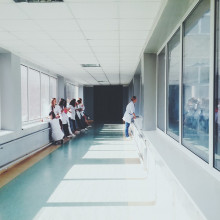
16:02 - Wolfson Economics Prize 2021
Wolfson Economics Prize 2021
Lord Simon Wolfson
Each year, the Wolfson Economics Prize is awarded to recognise fresh thinking that challenges the status quo in economics and public policy. And it’s a big deal: the winner gets £250,000. The 2021 Wolfson Economics Prize is looking for ideas that will “radically improve” hospital care. One reason for making this the objective is that England is about to spend £3.7 billion on what is being called the “biggest hospital building programme in a generation.” But what should be built, or changed? These are answers that Simon Wolfson, who founded the Wolfson Prize, is hoping this year’s entries will address to provide a blueprint that could guide the future health service overhaul. And he spoke to Chris Smith...
Simon - Basically, what we're looking for is ideas as to how to build a hospital of the future. And we're looking to improve absolutely every aspect of the hospital experience, whether that be the patient experience, the clinical outcomes, staff wellbeing, and the way that the hospital integrates with the healthcare system in its community.
Chris - Why are you doing this now?
Simon - 3.7 billion pounds is about to be invested in UK hospitals. And a lot of our hospitals are hugely outdated. The thing that concerns me is that we don't just build more of the same, or slightly improved versions of the past, but really go back to what a hospital could be and look at absolutely everything, from how people feel when they walk in. You know, do people feel that they're walking into an aesthetically pleasing, calm, well organised, easy to understand environment, or do they, as is all too often the case today, walk in somewhere that's extremely confusing, slightly intimidating, where the first reaction you have is one of confusion and fear. How the food is delivered to patients so that it's hot and appealing, and well cooked. Controlling infection within the hospital through designing the flow of patients, staff, ancillary workers, and visitors in such a way as to minimise cross-contamination
Chris - Why does this not exist already?
Simon - It's a bit like the old joke about two economists, actually. Two economists are walking down the street and one of them sees 50 pounds on the floor and says to his friend, you should pick up that 50 pounds. And the other economist said, well, if that was really 50 pounds, someone would have picked it up already. The reality is that innovation and new ideas require some form of stimulus to get the government to listen to those ideas, and make sure that they incorporate them into what they're doing. So, you know, my view is that a lot of these ideas would probably come to light without a prize. And some of them will be incorporated in these new hospitals, but this prize will get more ideas into the public domain and be able to be presented to the government in a single document that says here you go, this is what we need.
Chris - How's it going to work in practice, then? Talk us through the process of the call that's gone out, who you're hoping is going to enter, and how they'll be appraised, these entries.
Simon - We're looking for people with experience of working or building hospitals, to come together and present new ideas. So we're looking at everybody, from architects to clinicians, to nurses, to come up with their ideas as to how we could build a better hospital, the process will be two fold. The first entry is 10,000 words. We'd rather have entries that have got a small number of great ideas, in this first round, than something that is a comprehensive hospital design. The judges will then come up with five finalists, and those five finalists will then develop their ideas into something much more comprehensive, and we're looking for around 25,000 words. We're hoping to have a winner announced in November.
Chris - Is there a partner in this though, because obviously it's wonderful to stimulate this sort of thing, get these ideas flowing, bring teams together and come up with some really very exciting and innovative ideas, but will it just peter out after that?
Simon - There's definitely a perfect partner, and the perfect partner is the NHS. And what we're hoping is that by introducing this prize, wherever a hospital is being built, and whoever's responsible for it, there will be this winning entry where they can, in one place, see all these fabulous ideas laid out very clearly, well-explained, affordable.
Chris - And is it just the UK you're thinking about, or is the idea really that you could have a fantastic model that you could translate anywhere?
Simon - Our objective is absolutely that this is relevant around the world. At the end of the day, the clinical problems facing the hospital patients in Asia, Europe, America, ultimately is the same problem. And therefore the facility in which you're cured, will have lots of things in common, wherever you are in the world. The reason why we're focusing on the UK, and why the prize has started in the UK, is because this country is about to embark on a huge hospital building programme.
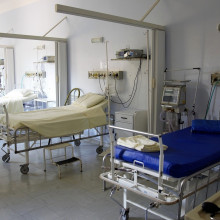
21:07 - Patient perspective: designing for wellbeing
Patient perspective: designing for wellbeing
Bami Adenipekun, author and Maggie's ambassador
What should the hospital of the future look like? Well for the rest of the show, we’ll be gathering the thoughts of architects, clinicians and scientists, as well as patients and staff. For author, speaker, trauma coach and Maggie's cancer charity ambassador Bami Adenipekun, the atmosphere and environment of a hospital setting really matters...
As a patient and loved one, I have to say that the current institutional hospital model is one that is not dignifying and is often scary. I would love to see hospitals that recognise the importance of surroundings to overall wellbeing. The power of intentional architecture and design to alleviate suffering cannot be over-emphasised. It humanises and boosts confidence.

22:01 - The future of infection control
The future of infection control
Christine Moody, Addenbrooke's Hospital Cambridge
One of the biggest challenges to safe and effective healthcare is making sure that patients don’t pick up infections while they’re in hospital and that they don’t bring new infections in with them. Infection control is a major priority now, even more so since the era of Covid-19, and it’s the job of infection control nurse Christine Moody at Addenbrooke’s hospital in Cambridge, who spoke with Katie Haylor...
Christine - The infection control healthcare burden is absolutely huge. Infection control has fingers in many pies. We look at absolutely every aspect of a hospital setting. It isn't just about the patient coming into the hospital, it isn't just about the staff caring for the patient. It's looking at the fabric of the hospital, the environment, the cleaning practices, the waste disposal, providing safe clean water, and ensuring that our patients are given a healthy, nutritious diet to eat while they're with us. So there's many aspects to infection control that really do impact on every little bit of a patient's stay.
Katie - So you kind of hinted at it there, but could you just tell us a bit about how infections spread and therefore how you try and mitigate that? Are there some sort of really key features that you have to focus on?
Christine - There is something called the chain of infection, which is really key to sort of helping you think about how patients may get an infection while they're in hospital setting, because it does happen, or whether we can prevent that happening in key areas, or if they do come in with infection how we can prevent that being spread to other patients. So it's something called the chain of infection, and that talks about looking at the different viruses, bacteria and other small microbes that can be spread either from person to person or from person to the environment and therefore then to other patients or even staff. And it does work the other way also from staff to patients and visitors. So we want to try and prevent that. The good thing about the chain of infection is it has really clear pointers where you can break it. So one of the key things that we can do is wash our hands, ensure that we wear the right personal protective equipment when dealing with patients, even looking at the environment itself and trying to minimise the potential for patients having contact with one another. And there's something that we do called isolation nursing or barrier nursing.
Katie - So how well does this system, of tracking the chain of infection and then breaking it at certain points, how well does that work?
Christine - It works reasonably well because ideally when a patient comes into the hospital setting and they are clocked in through the accident and emergency or what we call ED now, Emergency Department, you'll get a feel, and you'll get a list of things that you can look at and think, right, this is what we think might be going on with this patient. So therefore if you suspect there is an infection on board and whether it's something like flu, you know, having just been through the winter season, or a Norovirus, which we know are easily transmittable between people, then we want to try and prevent that from happening. So therefore we would move a patient into an isolation or barrier nursing room. So by putting up that barrier, if they are unwell, the chance of it being spread to another patient is far reduced. Also then the staff would take the correct precautions. So good hand washing, making sure that they put their apron and gloves, all the things that you see nurses wearing - and doctors as well - before they're going in to see their patient when they deal with their patients, to make sure that they're safe and clean and comfortable. Then removing that, so we call it doffing, aprons, their gloves, and there's disposing of them and then washing their hands again. So it's about trying to break the potential for spread.
Katie - What would you like to see in a hospital of the future with regards to infection control?
Christine - So if I had my infection control hat on and I was able to design a brand new hospital, it would be all side rooms, all with ensuites, actually have showers, toilets, and have every piece of equipment that I potentially could need in that room itself. By having the fact that normally, in a normal ward, you can see patients in a bay all together and they can see the nursing staff and the doctors, staff, and the cleaner, unfortunately, with a side room, it does mean that that is quite difficult. So having the technology to be able to sort of, almost like we're doing now, having a Skype call, being able to at least call a member of staff and have that visual would be a really great thing. To have your equipment for all your monitoring that you needed, being able to make that stay for that patient as comfortable as possible. Because one of the things with this isolation nursing is that some patients take to it very well, they like the peace, they like the serenity, and others do not - others miss that communication with other patients and having a bit of support that way. So we need to make these rooms as comfortable and at home-like, as we possibly can without obviously making it difficult for us to clean. We need to make sure that the environment is as clean as possible so there's no spread of infection.
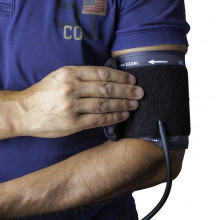
27:36 - Future hospitals: thoughts from a nurse
Future hospitals: thoughts from a nurse
a nurse
A nurse shared her thoughts about what she'd like to see in the hospital of tomorrow...
It would be important to re-evaluate the actual structure of the hospitals when they’re made so they are fit for purpose. For example, our growing population of people (and patients growing in size) means that space is an issue and causes tremendous pressure from a logistical point of view. It can be difficult to treat a bariatric patient in some areas because the equipment required can be overwhelming.
The requirement for siderooms has proven a necessity, particularly in the pandemic due to air borne viruses. The unfortunate patients that have been infected and those that need protection from the virus are at risk. Therefore, I would suggest a generous size hospital, with more-than-needed side room space, but more importantly with speciality specific areas so that specialists can treat the patients effectively.

28:31 - How to ventilate hospitals
How to ventilate hospitals
Alan Short, Clare Hall, Cambridge University
Cambridge University’s Alan Short is an architect who’s very interested in designing hospitals, and has done recent work on the flow of air in hospitals. He spoke to Chris Smith, who firstly put to Alan that Florence Nightingale might not feel out of place in the hospitals of today...
Alan - I'm not sure about that Chris! I'm looking at her 1858 Liverpool lecture, which changed hospital design in Britain, and she wrote 'Natural ventilation is the only means of procuring the Lifespring of the sick: fresh air”. No artificial ventilation can do that. And in the article there are plans of bad hospital wards, which are deep plan and can't be cross ventilated. And I think she'd see quite a number of those.
Chris - What I was getting at is that we don't do what Christine Moody was just saying, which is give people their own space and their own air and therefore their own opportunity to keep themselves away from the sources of infection that you see coming from, inevitably, contact with others. And what we probably need to be striving to do is to actually do that in order to keep people separated as much as possible, where appropriate, so that we don't get a cross spread of infection between patients, but also critically between staff and patients.
Alan - I was very interested to hear Christine say that because Professor Roger Ulrich came over from Texas A&M perhaps 12, 14 years ago, and persuaded the department of health that hospitals should be like hotels, where every patient has their own room, but there are quite interesting implications to that. Particularly the population of hospitals becoming older and older, people with dementia. We spent a lot of time in the Bradford Royal infirmary, which is a classic Nightingale Hospital, and the staff there were very pleased to have the older patients gathered in a Nightingale ward. And you can redesign them, make them much nicer and give everyone privacy. We have a zig-zag plan, which the cabinet office called Business Class for the NHS. So one can think a bit more laterally, I think.
Chris - Let's look at the ventilation for a second because that, arguably, is key isn't it, especially when you've got respiratory infections like Coronavirus, but also like the flu, which is a scourge every winter and things like Norovirus that causes winter vomiting disease, although that is not a respiratory infection air currents carry it round and lead to explosive outbreaks. How can we use ventilation to try to mitigate against some of those threats?
Alan - The enthusiasm for making artificial environments in large public buildings now is very problematic actually because mechanical air flow systems that push the air in at the top and take it out, mix and churn the air. That's part of the idea to save heating energy, but it's pretty disastrous in terms of spreading pathogens around a ward, or indeed in an operating theatre.
Chris - So how could we do it better?
Alan - You know, the NHS has to be zero carbon by 2050! We're very interested in reviving what was a fantastic art and science of natural ventilation. You can enhance that with some mechanical help, but our interest is in recovering all of this lost knowledge. And you can see it disappearing in the waves of hospital building since the last Nightingale hospitals were built in the late 1930s as matchboxes on muffins towers and other high rise slab buildings and so on become completely artificial in their environments. This is highly problematic and not really necessary, certainly not in England.
Chris - But what do you have in mind? What do you envisage would be the solution and how does your strategy work? And rather than just drop a cheque for 3.7 billion pounds and hope for the best, how do we do something that we know is going to be money well spent?
Alan - My colleagues and I have designed an imaginary very, very low carbon hospital for the department of health. They've set a target of 35 gigajoules to a hundred cubic meters and they didn't know whether you could make a hospital that would achieve that.
Chris - How does that compare and contrast with today then?
Alan - Addenbrooke's is about 104-107 gigajoules so it is a massive reduction in energy consumption. But we have a nice scheme for Addenbrookes, which is to stack ventilate all of the floors and to cross ventilate them, so organised natural ventilation. Of course a big problem in hospitals is they overheat in the summer and mechanical ventilation systems can't deal with that, and they have a much better chance of calming the environments if you naturally ventilate them.
Chris - Can you just explain to me how this actually works physically though? What would you have to employ? What would you have to install in order to have what you're envisaging actually working?
Alan - The most interesting scheme for the tower puts another elevation, a facade, on top of the one that's there, shades the windows because there's a huge solar gain problem, and it connects each floor to a series of stacks that go right up to the top of the building. And you just use the natural pressure differences, the top to the bottom of the building, to drive huge amounts of air through the building. And we've modelled that rather carefully and it looks very promising and this has really no energy at all expended in venting the hospital.

34:29 - Future hospitals: what staff want
Future hospitals: what staff want
Mary Dixon-Woods, THIS Institute Cambridge University
Critical to the functioning of any hospital are the staff. And too often, when budgets are tight and space is tighter, staff wellbeing, and the productivity benefits of a pleasant working environment, can be overlooked. Mary Dixon-Woods is a social scientist; she directs the THIS Institute that works to improve the scientific evidence base that informs how we improve healthcare. Katie Haylor spoke to Mary...
Mary - There's very much a relationship between quality of care and outcomes and the wellbeing of staff. Why it doesn't get the attention it possibly deserves is linked to the challenges associated with producing an evidence base for how you do improvements, and linked also to the level of investment that's needed in it.
Katie - Okay. So what evidence do institutions like yours have for what people who work in hospitals want from their future workplace?
Mary - We've actually got a really clear evidence base. They want clear goals. We know that teams function much better when they're very clear about what they are trying to achieve, we also know that teams in the NHS often aren't optimised in that respect. A second thing that they want is really good management systems actually. So functions like human resources need to function really, really well so staff know that their wellbeing is taken into account in planning. They know things like rotas and annual leave and occupational health are well-planned. They want appreciation and respect as we all do. They want respect particularly for aspects of diversity, and they want opportunities to contribute to improvements. And they also want, very importantly, to work in well-designed operational systems.
Katie - Tell me a bit more about the actual buildings. What about space for, say, somewhere to take a break?
Mary - It's very important. We've discovered this repeatedly that having a space to take a break is very important for all kinds of reasons. Some of them are to do with addressing fatigue, which is a major problem in hospital workers. And some of it is actually social and the opportunity to create connections with your colleagues is a very important part of team building. It's also very important to patient safety because this is an opportunity to create informal learning opportunities, to share knowledge, and often to anticipate problems and trap them in relation to individual patient care.
Katie - So how do you know all of this? What kind of evidence can you gather and how do you do it?
Mary - We can use a whole range of techniques. Sometimes they are surveys of staff and the NHS has been running very successfully for a number of years the NHS staff survey, which tells us an awful lot about what matters to staff and how well their needs are met. We can also use time and motion studies and these directly observe staff as they're going about their daily work. And we can identify, for example, how often they're interrupted. And I can tell you, nurses are interrupted every six minutes. We can tell you how much of their time is wasted on operational defects, and that's about 12% of their time. So huge opportunities for addressing frustration and time waste there. And we can use trials, we can use experiments to assess what kinds of interventions seem to make improvements. We can also learn a lot from industrial technique, including in particular engineering, which is very highly skilled in analysing and improving work systems.
Katie - So is that sort of applying an engineer's mindset, tackling some sort of process?
Mary - That's right. So we would often use social science techniques to analyse where the weaknesses might lie in a system and what matters to the people involved. So it's very important to build a vision of what good looks like from the perspective of patients and staff. Engineers are very good at using techniques, particularly in a discipline called human factors, which combines engineering, psychology, and a number of other disciplines into design of solutions that are well suited to addressing the problems that we can identify. And some of that will be to do with physical design, designing systems, as you were talking to your colleagues earlier, for example, ensuring that you've got smooth processes for say delivering medications to wards, smoothly operating equipment that minimises infections. Other times it will be to do with improving teamwork, communication, and other processes that rely on human interaction.
Katie - Is there anything else you think that the hospital of the future should look like in terms of being a workplace?
Mary - I think the hospital of the future should be constantly seeking to improve constantly learning from its own staff, and its own patients about what good looks like, how to make those improvements through continuous experiments and rapid cycles of change.
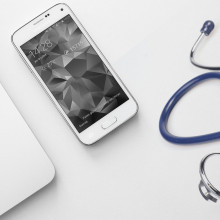
39:26 - Future hospitals: IT
Future hospitals: IT
Afzal Chaudhry, CUH
Arguably one of the biggest revolutions in recent decades is the introduction of computer systems and IT that can open up opportunities to streamline healthcare and marshall “big data”; or so we’re told! Afzal Chaudhry is Chief Medical Information Officer of the Cambridge University Hospitals NHS Foundation Trust, one of the first hospitals in the UK to go fully online and paperless. He spoke to Chris Smith...
Afzal - The implementation of hospital-wide electronic patient records are really able to bring benefits in a whole range of domains. If you think about ever increasing high quality care, then the properties of that are that care should be safe, timely, efficient, effective, it should be equitable. It should be patient centered and sustainable. And we know that technology is able to really help in all of those areas.
Chris - How? What does it do that we couldn't do with doctors' admittedly terrible handwriting and paper notes, like we had before?
Afzal - Increasingly medicine has become more and more complex, and there are a whole myriad of interactions that any given patient might have with their NHS in its widest sense. On a sort of daily basis, every 36 hours there are more than a million patient encounters with the NHS as a whole. We know that technology helps with safety. For example, supporting clinicians in making decisions. It can also help in terms of good prescribing, reducing unwanted variation, and it makes coordinated care much, much more straightforward.
Chris - They're very expensive these systems aren't they? The system that you've implemented at Addenbrooke's hospital did cost hundreds of millions. And in that sort of ballpark, you could employ large numbers of staff. So are they actually value for money?
Afzal - It is true that there's a cost to implementing these systems. In fact, the majority of the cost for us at Addenbrooke's was related to infrastructure, making sure that all of the computers were modern, that there was a hospital-wide wireless network and also a lot of work around device integration. So connecting all of our physiological monitors and ventilators to the electronic patient record system. But it is true that those systems do cost money. But the counter to that is that what we're doing with paper-based systems is also incredibly expensive. We used to employ a lot of staff who were managing the paper records, putting in the library, retrieving them. We know that paper records were on occasions lost, and that was really diminishing the quality of patient care. And we also know that across a whole range of domains, nurses, for example, were spending a lot of time trying to track down what it was that the doctors wanted to do, or transcribing information from one piece of paper to another piece of paper. And all of that when you multiply it across the domain of a single hospital and then across the NHS as a whole, is incredibly inefficient and expensive. So I would argue that the cost of not doing this is actually worse than the cost of doing it.
Chris - And Imran's point that actually we should be looking at AI - he's getting at using various ways of marshaling big data. Presumably having everything in one place electronically, very consistently and homogeneously recorded does make doing original research, follow up, side effect monitoring and so on, much easier.
Afzal - Absolutely. So even at Addenbrooke's, which is just one hospital, in any given month we're recording over 170,000 new diagnoses on our patients, about 3.8 million results on our patients. And what you can see is that consistency of data, that accuracy of data, the timeliness of it on a significant number of patients from routine clinical care is immensely valuable. The data, for example, from Israel related to COVID vaccination has proven to be really, really important. There's been one of the really early examples of the success of the vaccination programme. And that really relates to the fact that they have a strong, consistent model of recording information on every patient that's used for the betterment of all.
Chris - If I could write you a cheque that would buy you some wonderful equipment or IT infrastructure for the hospital of tomorrow, what can you not do at the moment that you wish you could?
Afzal - I think really what we want to do is to really invest in supporting our patients. So patient empowerment through transparency and access to their own data. I think remote monitoring of patients, whether in the hospital or at home to get a better understanding of both their physiological parameters and their day-to-day routine. Combined with that high volume of data that we get through consistency means that we'll be able to really move towards a position where we'll be able to deliver more personalised care for patients, based on their own activity, their own physiological parameters, their own clinical baseline. And that means we'll be able to detect disease at an earlier point in time. And that means that often the treatment will be more straightforward and more effective.

45:26 - Patient perspective: ward layouts and privacy
Patient perspective: ward layouts and privacy
Bami Adenipekun, author and Maggie's ambassador
So far, we’ve considered the hospital of the future as a building, an information hub and a workplace. But ultimately, hospitals exist to treat patients. So what’s missing at the moment and needs to be prioritised? Here’s Bami Adenipekun...
Bami - Careful thought and planning need to be given to ward layouts to accord patients confidentiality as well as privacy when required. The design of patients’ hospital wear needs to take into consideration movement outside of consultation rooms to afford a modicum of dignity. As infection control has become a vital issue, food handling requires a rethink as well.
Bottom line is that a one-size-fits all approach does not serve patients and their loved ones well. As hospitals exist to treat people, constructive engagement with their representatives should be reflected in overall structure and design. Hospitals are for patients not the other way round.
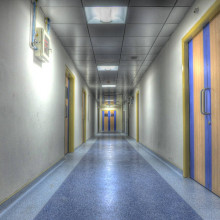
46:29 - Light, noise, art: how patients feel
Light, noise, art: how patients feel
Evangelia Chrysikou, UCL
Evangelia Chrysikou is an architect and medical planner at UCL. She spoke to Katie Haylor about how hospital surroundings can be adapted to improve how patients feel while in hospital...
Evangelia - In my own research in psychiatric hospitals, fairly frequently patients complain about noise from doors. They are heavy. If you're in a ward you can hear many doors. People don't think very much of the surfaces. Surfaces are thought as an aspect for infection control. We don't consider for example, that it could be surfaces, that could absorb noise. We have these technologies, we do these things in other contexts. There are technologies that could be used, low tech and high tech.
Katie - So noise is one. What about light? Have there been studies done to assess how much light someone can tolerate if they need to go to sleep or anything like that?
Evangelia - Light is something that in general, it is relatively well-studied. Light can be positive or annoying depending also where the light source is. It can be managed by where we place the source of light, but also what type of light we have. If we can adjust for example elements in the room, like if a hospital room could have curtains that maybe the patient could control. If for example, we have the discussion about individual and shared patient rooms, where again, there is the control aspect can be different. If you give to the patient the opportunity to control the light, this is around the bed. But also where the light sources are in the corridors. For example, this was most frequent in the past that the hospitals would have the light in the middle of the corridor. And then you would have people looking at these lights when they were moved around the hospital. Now, this is something that designers take into better consideration, for example, but in general, it can have a therapeutic effect.
Also natural light, this is an area where we have very good evidence. There has been a study on recovery. And we have seen that patients who recover in the post-operation rooms, that they have windows with natural light, as opposed to people who are in dark rooms, artificially lit. The people who are in the natural light area, they have faster recovery. And this is very significant because it means that you need less pain medication for example, they occupy the bed of that area less time, but it's also very important for the patient to leave the hospital or specific areas of the hospital to move to more relaxed spaces, as soon as possible.
Katie - You've mentioned light and noise, but what about decorations in a room?
Evangelia - In all of this comes the element also of control and the ability of people to intervene in their environment. This has a positive effect when people can control their environment. We have evidence when they can control temperature, for example, or as I said, the light. But with decorations there was a study done in the US where they used the pictures of the Amazon catalogue. They classified the images according for example, images that were more abstract, more naturalistic, photographs of nature, sea views, or savanna. They looked at what healthy people liked when they live in their homes and what patients really liked when they are in the hospital. And they found that the two groups differ significantly. Patients in hospitals, they liked naturalistic images. They were not fond of abstract art. And they liked images of nature. Savanna was their preference, which is something that, of course you don't expect to see in people's home, where you have more variety and more different types of art. But this was a very good study, actually.
Katie - Are there any other really key areas where research suggests that designers can intervene to make the experience of being in hospital a bit better?
Evangelia - Yes, for me, the control is a very important element. When the patient enters the hospital, they lose a lot of things. And one of them is their choice and that personalisation. And a lot of decisions happen for them.
It's important to have a sense of control. This is something that is not only for patients. We have evidence for that for all people. But everything that's applicable to normative people is more applicable when people are not well.
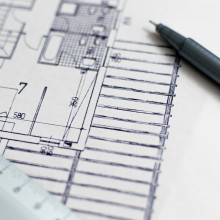
51:09 - Reflecting on hospitals of the future
Reflecting on hospitals of the future
Architect Alan Short and social scientist Mary Dixon-Woods reflect with Chris Smith on the hospitals of the future...
Mary - There are lots of design issues to be resolved. As you say, many of these priorities for patients are evident, but how you resolve them is not as straightforward as it might appear. Also important to patients are fundamental processes of care. We know, for example, about 20 to 30% of patients admitted to hospital develop delirium, which is a very upsetting and frightening condition for patients where they become acutely confused. We know that it can be managed or prevented to some extent by processes of care, like good hydration, good diet, pain control, avoiding constipation. To deliver all of those processes, to make sure people reliably get the care that they need, you need to have enough staff and that's absolutely key. And you need to have processes that enable staff to do what they need to do.
Chris - Alan short, is this all feasible given the constraints of the building architecture that we have within the NHS already? Because the NHS is a huge landowner, isn't it? And has a huge number of assets that effectively all would need to be retrofitted and updated to meet some of these expectations.
Alan - Yes, well, we measured 627 buildings across England. And the bill we came up with was about £17 billion. It's entirely possible to rescue these buildings. I think the challenge for designers is how to achieve the dignity and humanity in the spaces that your previous speaker spoke to. And I think that's about designing very characterised and specific places and buildings. Not huge gridded slabs, contemporary prototype for a hospital.
Chris - I'm surprised it's actually so low. £17 billion. I know that that is about six times bigger than what they're currently planning to spend. But given that that is the whole lot. That's not that much.
Alan - It's not that much because the backlog maintenance bill in the NHS is between four and a half and 5 billion a year. Yes, it's about five years, you know, normal maintenance cost. It's entirely possible.

53:41 - QotW: Different species' chromosome numbers
QotW: Different species' chromosome numbers
Eva - It’s an interesting question - how did changes in chromosome number ever occur if they can cause the individual to not be able to breed to pass on those changes to the next generation?! I put the question to Hugues Roest Crollius, he’s an expert in genome evolution at an institute in Paris...
Hugues - It is true that in humans, the number of chromosomes is 46 and any change can lead to adverse effects, such as in the case of Down syndrome caused by an extra chromosome 21. However, during evolution, chromosomes slowly evolve and exchange pieces and they can also fuse or break.
Eva - These changes can happen due to mistakes during meiosis - the genetic process by which we divide up our DNA to make eggs and sperm. Importantly, not all mutations in chromosome number result in infertility - as long as the chromosomes haven’t changed so much that you can’t make any viable eggs and sperm anymore. In fact, it’s these changes that can trigger the formation of a new species.
Hugues - Because of the fusions and breaks, the total number of chromosomes can change between species: two chromosomes can fuse to become one, for example. Starting from a common ancestor, after millions of years of this process, two species can end up having very different numbers of chromosomes. For example the ancestor of placental mammals lived about 100 million years ago, and we think that it had 46 chromosomes. Today, one of its descendants, the Indian Muntjac, a species of deer, has only 6 chromosomes, while dogs, another descendant, have 78!
Eva - In fact, scientists think that it was a fusion of ancestral chromosomes that created the human chromosome 2, and that this could have been an important part of separating us as a species from our close relatives the chimps, apes, and orangutans, who all have 24 pairs of chromosomes to our 23.
Hugues - The chromosome number can therefore vary quite widely, and ultimately, it’s just not so important. What’s actually important is the total number of genes that they carry. All mammals, humans, mice, dogs and indian muntjacs included, have about 20.000 genes on their chromosomes. The many small dog chromosomes carry few genes each, while the few large indian muntjac chromosomes carry lots of genes, meaning that they both have about 20.000 in total. This number of genes is important to carry out all the important functions required for the typical mammalian organism.
Eva - Given this, it is easier to understand why an extra chromosome 21 causes Down syndrome: it is not so much the extra chromosome by itself, it is all the extra genes that it carries that cause the disease. And importantly, about 30-50% of women with Down’s syndrome are fertile, and some men with Down’s syndrome have fathered children too.
Thanks Hugues! Next week, we’ll be looking into this question from Nancy
Nancy - Why does chilli stay on your fingers for so long after cooking with them, even after you wash your hands multiple times it can still hurt if you touch your eyes!
Related Content
- Previous Storms on the Sun
- Next How did varying chromosome numbers evolve?










Comments
Add a comment